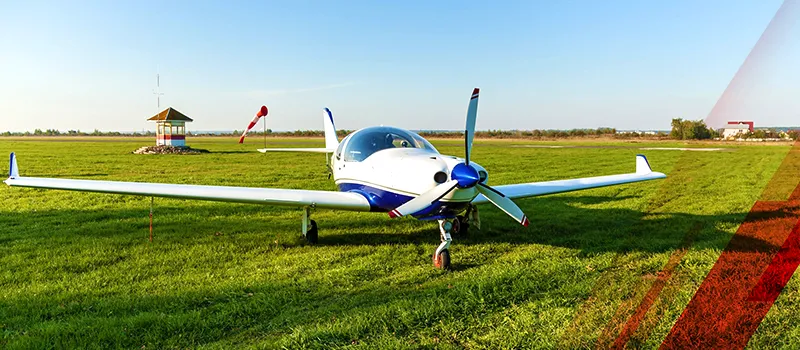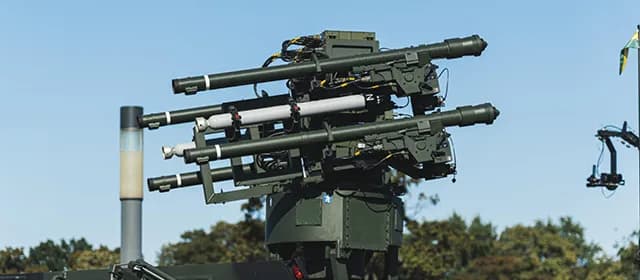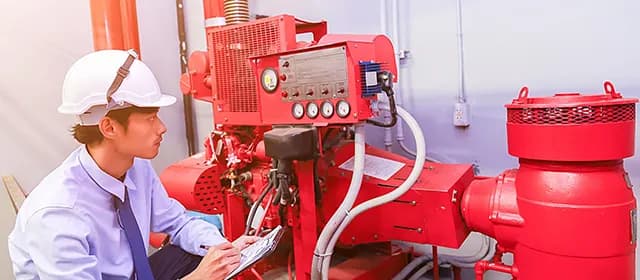Have you ever experienced sitting on a plane and hearing the loud rumbling noise it makes? Now, imagine a plane gliding silently through the air, emitting no noise or emissions. Ever wondered if that's possible? Enter the hero of aviation - electric aircraft a plane that offers sustainability by minimizing the impact on the environment.
Let’s explore the electrifying world of flight.
What is Electric Aircraft?
Electric aircraft, also known as electric planes or e-planes, are airplanes that are powered by electricity instead of traditional fossil fuel engines. These innovative aircraft utilize electric motors to propel them through the air, offering numerous benefits over traditional jet fuel-powered planes. Electric flights offer various benefits, including lower carbon emissions, reduced noise pollution, and potentially lower operating costs.
How Does an Electric Aircraft Work?
Electric aircraft can be powered by various methods, the most common being batteries. These batteries store electrical energy that is then used to drive the electric motors, providing the necessary power for flight. Electric propulsion is widely used in small experimental aircraft, larger commercial passenger planes, and unmanned aerial systems, showcasing its widespread usage in the aviation industry.
Electric aircraft are being developed to reduce aviation's environmental impact, aiming for zero emissions and quieter flights. According to the report published by Kings Research, the global electric aircraft market is likely to accrue a valuation of USD 31.24 billion by 2030, growing at a compound annual growth rate (CAGR) of 15.06% from 2023 to 2030. This statistic shows the promising growth in this industry.
Types of Electric Aircraft
Electric aircraft come in various types and configurations, each designed to serve specific purposes and meet different aviation needs. Here are some common types of electric aircraft:
- Small Experimental Aircraft: These are typically small, single-seater aircraft used for research, testing, and development of electric propulsion systems. They often serve as prototypes for future electric aircraft designs.
- Air Taxis: Air taxis are small, electric-powered aircraft designed to transport passengers over short distances, typically within urban areas. They offer a more sustainable and efficient alternative to traditional ground transportation.
- Unmanned Aerial Systems (UAS): UAS, also known as drones, are remotely piloted or autonomous aircraft that can be powered by electricity. They have a wide range of applications, including aerial photography, surveillance, delivery services, and more.
- Hybrid Electric Aircraft: Hybrid electric aircraft combine electric propulsion systems with traditional fossil fuel engines. They use electric motors for takeoff, landing, and low-power operations while relying on conventional engines for cruising at higher speeds or for extended range.
- Commercial Passenger Planes: Although still in the early stages of development, there are ongoing efforts to create electric-powered commercial passenger planes. These aircraft aim to reduce carbon emissions and noise pollution associated with air travel.
- Vertical Takeoff and Landing (VTOL) Aircraft: VTOL aircraft, also known as eVTOLs (electric vertical takeoff and landing), are electric-powered aircraft capable of taking off and landing vertically. They have the potential to revolutionize urban air mobility and transportation.
Novel Innovations in Electric Aircraft Realm
Here are the recent innovations in the e-airplane
- e-Flyer
Bye Aerospace developed the eFlyer, which is an all-electric training aircraft designed to reduce operating costs and environmental impact. It operates at a significantly lower cost per hour compared to traditional aircraft and demonstrates the potential for electric propulsion in aviation. This all-electric training aircraft has gained significant attention in recent years due to its potential to revolutionize pilot training and contribute to a more sustainable aviation industry.
- X-57 Maxwell
The X-57 Maxwell is an experimental aircraft developed by NASA and the military, aiming to become a commercially viable all-electric passenger aircraft. The aircraft, a modified Italian Tecnam P2006T, will replace gas-powered engines with electric cruise motors on the wings and six smaller motors along the wing leading edge.
The team chose Electric Power Systems to build an 850-pound lithium-ion battery pack, a project that was tested successfully in late 2017, demonstrating innovation and success.
- EcoPulse
Airbus, Daher, and Safran are jointly developing the EcoPulse project, which aims to create a distributed hybrid-electric propulsion aircraft. Based on Daher's TBM light-aircraft platform, this project focuses on reducing carbon emissions and exploring new propulsion technologies.
Airbus is contributing battery technology and aerodynamic modeling to evaluate the benefits of distributed propulsion, which can improve aircraft performance by reducing thrust generation among small engines, reducing cabin noise, and increasing energy savings through better aircraft control.
To Sum It Up
In the era of sustainability and technological advancements, innovative flying machines have the potential to revolutionize the aviation industry. With their eco-friendly nature, reduced noise pollution, and lower operating costs, electric aircraft embody the principles of sustainability and efficiency that our world increasingly demands.
The advancements in electric aviation are not only transforming the way we travel but also inspiring a new generation of pilots and engineers to push the boundaries of what is possible. As we look to the future, electric aircraft hold the promise of a greener and smarter aviation industry where air travel becomes more accessible, environmentally friendly, and enjoyable for everyone.




